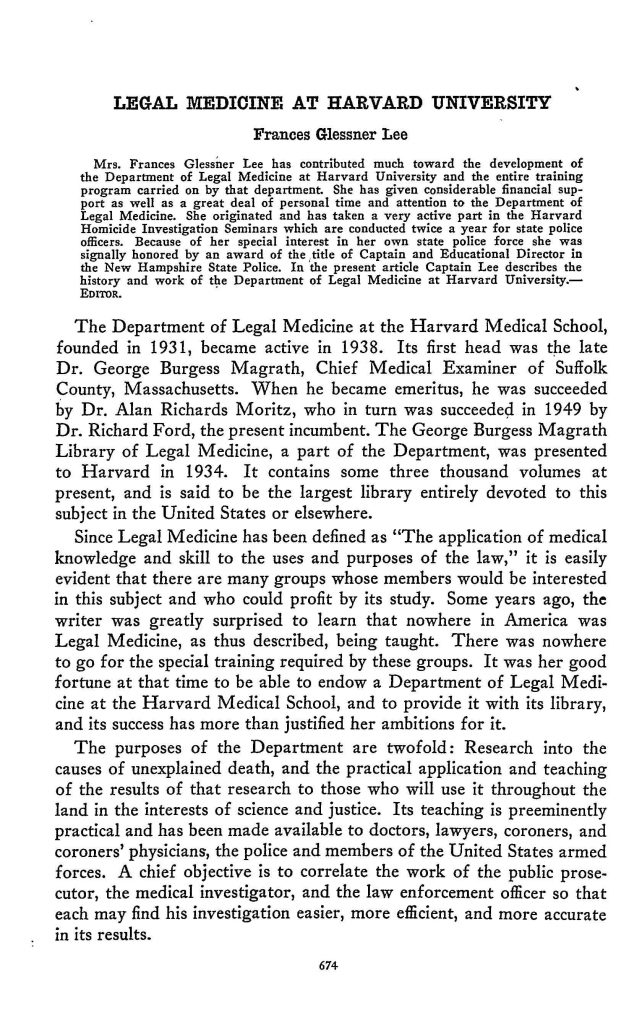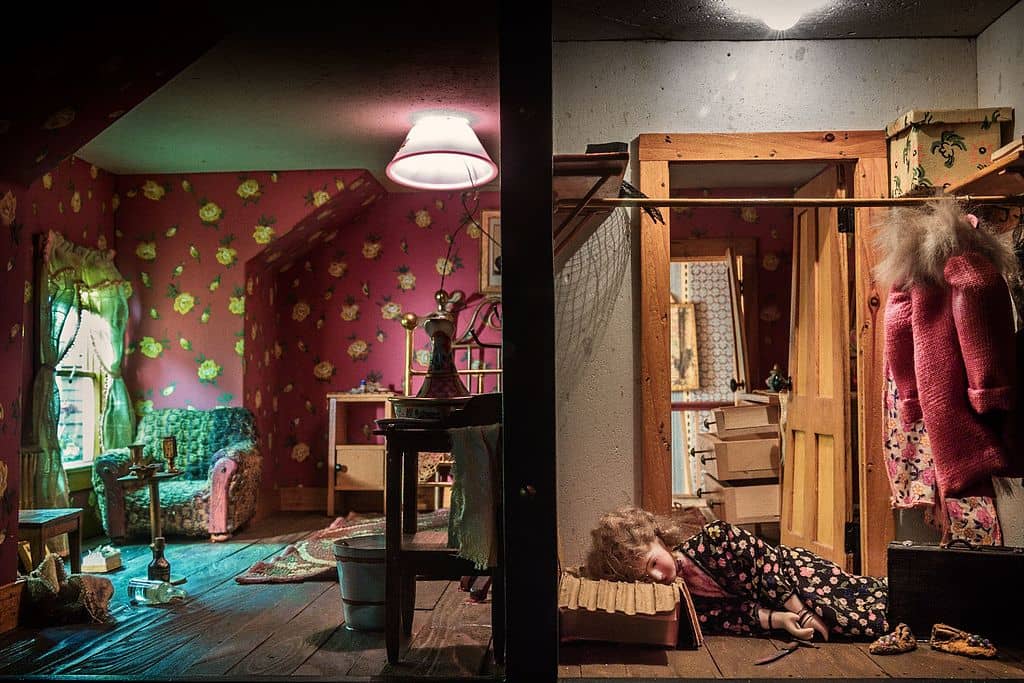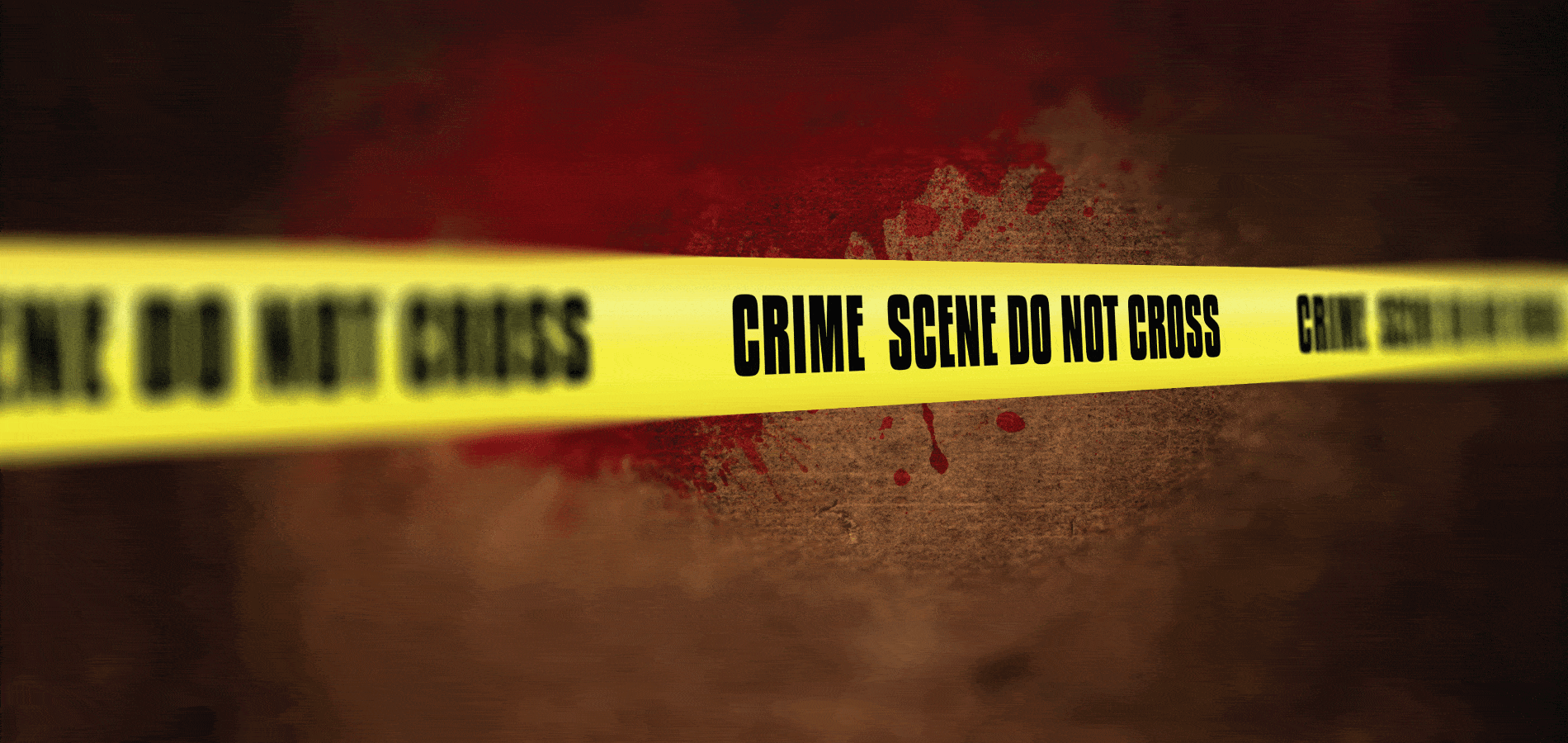In a nutshell, the living room looks almost normal. Sitting on the sofa is a basket of yarn, waiting to be turned into a scarf or sweater. There’s a Sherlock Holmes novel on the coffee table. The curtains are pulled back, the wall clock sounding out the seconds. The fireplace grate is still cooling from its recently extinguished flames.
It is at the armchair by the fireplace that you see the first suggestion that something is wrong: the floor lamp left illuminated for no one, the newspapers strewn on the floor, the cigarette butts scattered across the side table, uncharacteristic in a room of tidy surfaces. On the opposite side of the fireplace is a curtain, meant to obscure the staircase leading to the home’s second level. As you peek around the corner, you see the body of a woman lying facedown at the bottom of the stairs.
This is a crime scene and it is not. The dead woman is a representation of a real victim, but you are not standing in her home. Instead, the scene has been perfectly preserved in miniature, painstakingly recreated in a dollhouse-sized diorama.
There are 18 other such dioramas, together known as the Nutshell Studies of Unexplained Deaths. They reconstruct scenes of death both suspicious and malicious, shocking and ordinary: the farmer hanged in his barn; the young couple bloody in their bed; a woman, fully clothed, half-hanging out of her old fashioned bathtub, water pouring onto her face. The Nutshell Studies were built throughout the 1940s by a most unusual artist, Frances Glessner Lee, the “mother of forensic science.”
A Coroner and a Medical Examiner Walk into a Crime Scene
Frances Glessner Lee[1]Katherine Biber, Little Clues: Frances Glessner Lee’s Archives of Domestic Homicide, 6 law&history 46 (2019). This article is found in HeinOnline’s Law Journal Library. was born in Chicago in 1878 into a family of wealth and privilege. Her father, John Jacob Glessner, made his fortune in International Harvester; the Glessner family home in Chicago is a sprawling mansion built by famed architect H.H. Richardson and today is a National Historic Landmark.
As was true of many women of Lee’s time, she was not able to pursue a full university education. While her brother attended Harvard University, Lee married, had children, and divorced. But she did strike up a lasting and influential friendship with George Burgess Magrath,[2]George Burgess Magrath, Medical Science in the Service of the State: With Especial Reference to the Investigation of Deaths, 146 Annals Am. Acad. Pol. & Soc. Sci. 249 (1929). This article is found in HeinOnline’s Law Journal … Continue reading her brother’s Harvard classmate. Magrath was studying medicine at Harvard and in Lee found someone who shared his interest in crime scene investigation.
In the early 20th century, suspicious deaths in America were investigated by a coroner, who presented his findings to a jury who determined the cause of death. Coronial inquests are an ancient common law model, “of so great antiquity, that its commencement is not known.”[3]Rudolph E. Melsheimer, Sir John Jervis on the Office and Duties of Coroners: With Forms and Precedents (4th ed. 1880). This book is found in HeinOnline’s Criminal Justice & Criminology. Deriving its name from the same Latin root as crown, coroners were Crown officials who were either appointed or elected to their office. Sudden, suspicious, or deaths of unknown cause were investigated by the coroner, who presented his findings to a jury, who ruled on the cause of death. The coroner and jury would travel to the death scene to view the body of the deceased together.[4]Rudolph E. Melsheimer, Sir John Jervis on the Office and Duties of Coroners: With Forms and Precedents (4th ed. 1880). This book is found in HeinOnline’s Criminal Justice & Criminology.
The Heiress at Harvard
By the time Lee and Magrath were introduced as friends, there was a growing movement in the United States to move away from the coroner’s inquest model the country had inherited from its beginnings as a British colony and to instead use medical examiners. While the two roles are closely related, a coroner is not a trained medical doctor. Often, a coroner is a lawyer or layperson. A medical examiner, however, has a medical degree. Like coroners, medical examiners investigate suspicious deaths, but they also perform post-mortems, and are often trained in forensic science.
When Lee’s father died in 1936, she used her inheritance to endow the Department of Legal Medicine at Harvard,[5]Katherine Biber, Little Clues: Frances Glessner Lee’s Archives of Domestic Homicide, 6 law&history 46 (2019). This article is found in HeinOnline’s Law Journal Library. the first such program in America. Lee’s old friend, George Burgess Magrath, was the department’s first head.[6]Frances Glessner Lee, Legal Medicine at Harvard University, 42 J. Crim. L. Criminology & Police Sci. 674 (1952). This article is found in HeinOnline’s Law Journal Library. Lee herself described the department’s purpose as “to correlate the work of the public prosecutor, the medical investigator, and the law enforcement officer so that each may find his investigation easier, more efficient, and more accurate in its results.”[7]Frances Glessner Lee, Legal Medicine at Harvard University, 42 J. Crim. L. Criminology & Police Sci. 674 (1952). This article is found in HeinOnline’s Law Journal Library. Lee also established the George Burgess Magrath Library of Legal Medicine, donating some three thousand books to the library’s shelves.

In addition to training young doctors, the department set up week-long seminars for doctors, medical examiners, coroners, and police officers, with the aim of educating and standardizing investigation techniques. Lee was extensively involved in the department’s work despite having no formal training in medicine or police investigation. It was here that she would make her most famous contribution to forensic science with her Nutshell Studies.
In a Nutshell
To help train investigators, in 1944 Lee started creating miniatures of crime scenes. Lee christened her collection of miniature models the Nutshell Studies of Unexplained Death. Built on a one inch to one foot scale,[8]Katherine Biber, Little Clues: Frances Glessner Lee’s Archives of Domestic Homicide, 6 law&history 46 (2019). This article is found in HeinOnline’s Law Journal Library. Lee used police reports, newspaper accounts, and eyewitness interviews to painstakingly recreate the real crime scenes. She spared no expense in their construction;[9]Katherine Biber, Little Clues: Frances Glessner Lee’s Archives of Domestic Homicide, 6 law&history 46 (2019). This article is found in HeinOnline’s Law Journal Library. Lee employed a full-time carpenter to build miniature furniture as she hand-painted wallpaper.
Each Nutshell contains an abundance of detail that may or may not be relevant to the case: do the extinguished fire and tipped over ashtray indicate the signs of a struggle with an assailant? Did the woman drown in the tub, or was her body staged there? Lee deployed a high degree of craftsmanship in each of her Nutshells; “doors, windows, and bureau drawers open, stove lids lift, books open and have printed pages, knitting is real, costumes are complete, including underwear.”[10]Robert F. Bradford, Harvard Studies Homicide – New Models of Unexplained Death, 17 B. BULL. 140 (1946). This article is found in HeinOnline’s Bar Journals Library. Lee also took great pains to convey in her nutshells “the social and financial status of those involved, as well as their frame of mind at the time the death took place.”[11]Frances Glessner Lee, Legal Medicine at Harvard University, 42 J. Crim. L. Criminology & Police Sci. 674 (1952). This article is found in HeinOnline’s Law Journal Library. They are each christened with stark titles that convey a creeping foreboding in their utilitarian terseness, with names like “Dark Bathroom,” “Burned Cabin,” “Three-Room Dwelling,” and “Unpapered Bedroom.”

The Nutshells were used by Lee in seminars at Harvard. Rather than give students static black and white photographs of a crime scene, students were instead assigned a Nutshell and given 90 minutes to study it. At the end of their examination, students presented their findings, after which they were finally told the lesson their particular Nutshell was designed to teach. Lee herself described this exercise thus:[12]Frances Glessner Lee, Legal Medicine at Harvard University, 42 J. Crim. L. Criminology & Police Sci. 674 (1952). This article is found in HeinOnline’s Law Journal Library.
“These models are not ‘whodunits’—they cannot be solved merely by looking at them. They are intended to be an exercise in observing, interpreting, evaluating and reporting—there is no ‘solution’ to be determined. One of the essentials in the study of these Nutshells is that the student should approach them with an open mind—far too often the investigator “has a hunch,” and looks for and finds only the evidence to support it, disregarding any other evidence that may be present. This attitude would be calamitous in investigating an actual case.”
In honor of her work, the New Hampshire State Police made Lee an honorary captain in 1943, thus making Lee the first woman police captain in the United States. She continued offering her Nutshell seminars until her death in 1962.
Today, eighteen of the Nutshells are held by the Maryland Medical Examiner’s Office, where they are still used for training. Interested readers can take a VR tour of five of the Nutshells via the Smithsonian American Art Museum. The five Nutshells offered are “Woodman’s Shack,” “Attic,” “Parsonage Parlor,” “Garage,” and “Living Room.”
HeinOnline Sources[+]
| ↑1, ↑5, ↑8, ↑9 | Katherine Biber, Little Clues: Frances Glessner Lee’s Archives of Domestic Homicide, 6 law&history 46 (2019). This article is found in HeinOnline’s Law Journal Library. |
|---|---|
| ↑2 | George Burgess Magrath, Medical Science in the Service of the State: With Especial Reference to the Investigation of Deaths, 146 Annals Am. Acad. Pol. & Soc. Sci. 249 (1929). This article is found in HeinOnline’s Law Journal Library. |
| ↑3, ↑4 | Rudolph E. Melsheimer, Sir John Jervis on the Office and Duties of Coroners: With Forms and Precedents (4th ed. 1880). This book is found in HeinOnline’s Criminal Justice & Criminology. |
| ↑6, ↑7, ↑11, ↑12 | Frances Glessner Lee, Legal Medicine at Harvard University, 42 J. Crim. L. Criminology & Police Sci. 674 (1952). This article is found in HeinOnline’s Law Journal Library. |
| ↑10 | Robert F. Bradford, Harvard Studies Homicide – New Models of Unexplained Death, 17 B. BULL. 140 (1946). This article is found in HeinOnline’s Bar Journals Library. |



